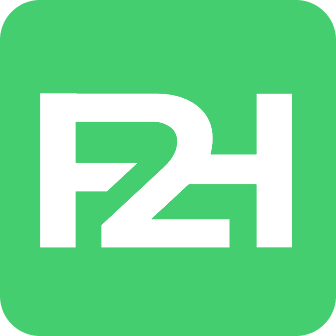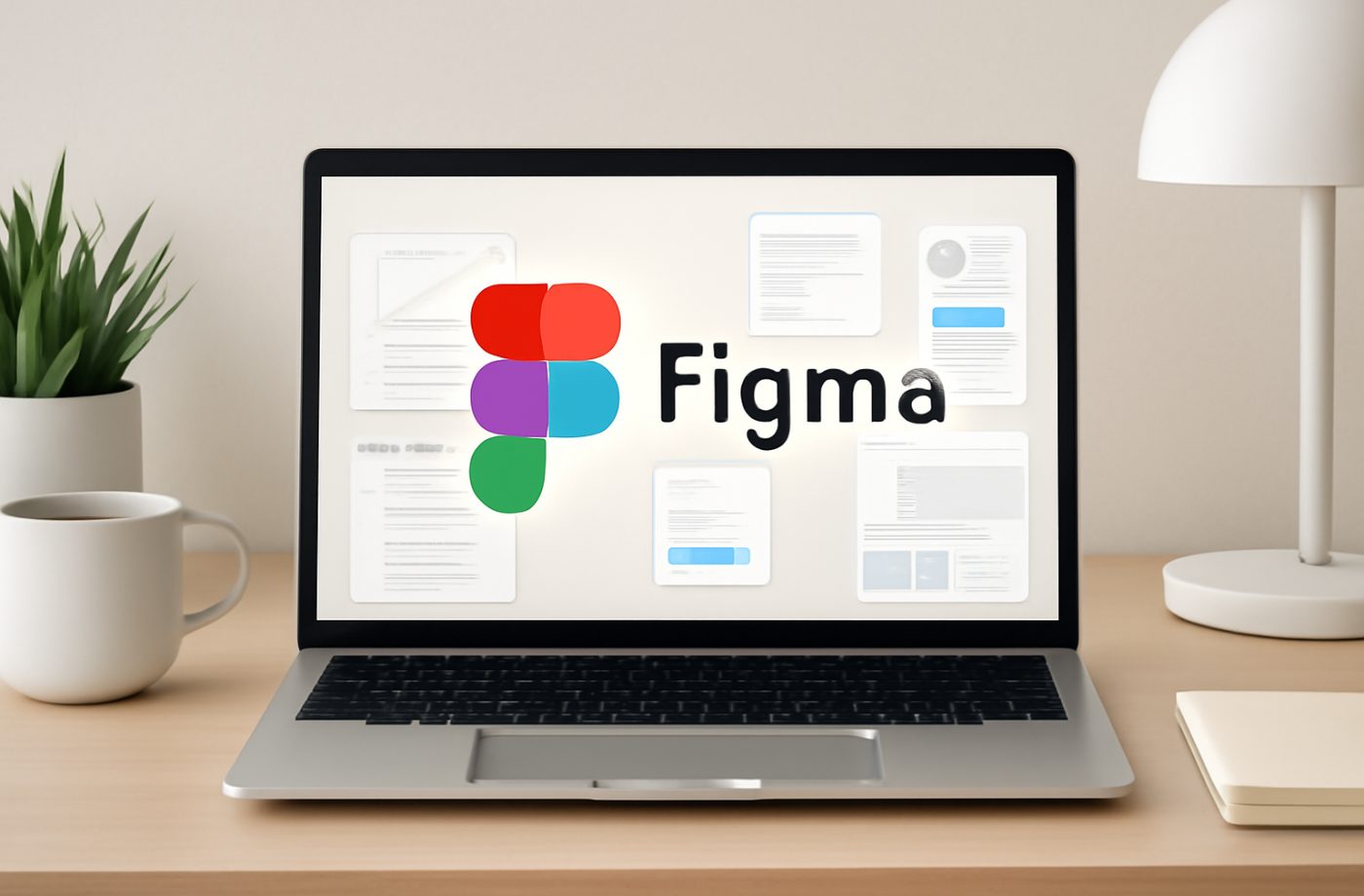We are Figma2html — a passionate and detail-oriented team of designers and developers. From UI/UX to fully functional websites, we craft quality digital experiences with a strong focus on communication, collaboration, and timely delivery. At the core of everything we do is a commitment to excellence and long-term client support.
What is Figma? Features, Benefits, and How It Transforms UI/UX Design
If you’ve heard colleagues or designers talking about Figma but aren’t sure what all the buzz is about, you’re not alone. So, what is Figma? In short, it’s one of today’s most popular collaborative design tools, reshaping how designers, developers, and product teams create user-friendly digital products.
Unlike older tools that required downloads or complex setups, Figma runs entirely in the cloud. This means you can design interfaces, share projects, gather feedback, and prototype—all in one place and in real time. Add FigJam, Figma’s collaborative whiteboarding tool, and you get a complete ecosystem for brainstorming, planning, and execution.
In this guide, we’ll explore Figma’s key features, real-world benefits, use cases, and why it has become the go-to solution for UI/UX professionals. By the end, you’ll know exactly how it can transform your design workflow and whether it’s the right tool for your team.
What is Figma? A Simple Yet Powerful Definition
Figma is a cloud-based UI/UX design platform that allows individuals and teams to create, collaborate, and prototype digital products. It eliminates the need for heavy software downloads and proprietary file sharing. Instead, you work directly in your browser—or native Figma apps—while your work auto-saves in the cloud.
At its core, Figma solves three common pain points:
- Version Control Issues: No more confusing file names like final_v5.psd.
- Collaboration Barriers: Multiple users edit a design at the same time, similar to Google Docs.
- Cross-Platform Problems: Figma works on Windows, macOS, Linux, and even mobile devices.
Figma at a Glance – Core Features
1. Browser-Based Platform
You don’t need powerful machines or endless installations. Open Figma in a web browser and start designing instantly. This accessibility has been one of its strongest adoption drivers.
2. Real-Time Collaboration
Multiple stakeholders—designers, developers, marketers—can jump into a file, add comments, or make edits simultaneously. This “live collaboration” is similar to Google Docs but in the design world.
3. Vector-Based Editing
Figma uses vector graphics, making it ideal for creating scalable UI components. This ensures resolutions stay sharp across screen sizes.
4. Prototyping Without Code
From static screens to clickable prototypes, Figma allows teams to demonstrate workflows without needing external tools.
5. Component & Design Systems
Create reusable buttons, headers, icons, or entire UI kits. Update one component, and it automatically updates across your entire project.
6. FigJam Integration
FigJam is Figma’s collaborative online whiteboard. Teams use it for brainstorming sessions, wireframing, or mapping customer journeys.
Benefits of Using Figma
Figma goes beyond features—its real-world benefits explain why it has overtaken competitors like Sketch and Adobe XD.
1. Accessibility and Cross-Platform Support
Anyone with an internet browser can access Figma, regardless of their operating system. Teams scattered across the globe can work seamlessly without worrying about software compatibility.
2. Smooth Handoff to Developers
Developers can inspect Figma designs, copy CSS snippets, and download assets without external apps. This reduces friction in the design-to-development handoff process.
3. Cost-Effective Plans
Figma offers a free plan with ample features for independent designers and small teams. Paid plans unlock advanced collaborative functionality, permissions, and analytics.
4. Democratizes Feedback
Instead of endless screenshots or presentations, stakeholders log into the same file and leave comments directly on the design.
5. Integration with Popular Tools
From Slack and Jira to Notion and Trello, Figma sits comfortably within modern workflows.
Figma vs. Competitors
To understand why Figma is dominant, let’s compare it briefly with other design tools.
Figma vs Sketch
- Sketch: macOS-only, requires plugins for collaboration.
- Figma: Web-first, cross-platform, native real-time collaboration.
Figma vs Adobe XD
- Adobe XD: Desktop-based with cloud sync, but collaboration feels less seamless.
- Figma: Instant collaboration with no installation barriers.
Figma vs Canva (for visual design)
Canva is more for non-designers creating social media assets. Figma is for professional UI/UX design with precise prototyping.
Practical Use Cases for Figma
- UI/UX Design Projects: Create app screens, responsive websites, or wearable interfaces.
- Prototyping & Presentation: Share clickable demos with clients during approval stages.
- Brainstorming: Use FigJam for sprint planning, mind mapping, or customer journey mapping.
- Design Systems: Companies like Uber and Microsoft use Figma to manage global design consistency.
- Remote Teams: Fully remote product teams rely on Figma as their central collaborative hub.
How Figma Transforms UI/UX Design Workflows
Figma doesn’t just replace tools—it changes how teams work:
- From static files to living projects: Files are always “live” and updated.
- From silos to collaboration: No need to “hand off”—developers and marketers share the same workspace.
- From local to global: Remote companies gain an equal footing regardless of geography.
Micro-case: A startup with 5 designers and 3 developers saved 20+ project hours monthly just by adopting Figma for simultaneous feedback rather than multiple review loops.
Limitations of Figma
While powerful, Figma isn’t perfect:
- Requires stable internet; slow connections cause lag.
- Not as strong for print or heavy raster editing (Photoshop is still better there).
- Complex files with too many layers may become sluggish in the browser.
Still, for most UI/UX workflows, its benefits outweigh these limits.
Getting Started with Figma – A Quick Guide
- Sign Up Free: Create an account at Figma.com.
- Start in Browser: No downloads required (apps available too).
- Create a New File: Choose dimensions, artboards, or use a template.
- Use Components: Build buttons, nav bars, and reuse them.
- Prototype: Connect screens with motion animations.
- Invite Others: Share via link for instant collaboration.
- Add FigJam: Use it to brainstorm ideas before designing.
In just an afternoon, beginners can map wireframes, design layouts, and create clickable prototypes.
Mini-Summary
So, what is Figma? It’s a cloud-based design and prototyping platform that revolutionizes digital product creation. From accessibility to collaboration and prototyping, Figma unifies the entire product design lifecycle—something older tools never fully achieved.
Conclusion
Figma represents a shift in how design teams work in the modern era. By removing platform restrictions, enabling real-time collaboration, and bundling prototyping with design, it saves time, reduces costs, and enhances creativity. Add FigJam to the mix, and teams gain an always-available digital workspace for brainstorming and planning.
If you are a business, freelancer, or part of a global team, adopting Figma could easily transform your workflows. Its ability to bridge gaps between design, development, and product management is why it has become the industry standard in UI/UX design.
FAQs
Figma is used for creating, prototyping, and collaborating on UI/UX design projects such as mobile apps, websites, and digital platforms.
Yes, Figma offers a free plan with core design features. Paid plans unlock advanced permissions, analytics, and enterprise-level collaboration.
FigJam is Figma’s collaborative digital whiteboard used for brainstorming, mapping, and planning sessions.
Unlike Sketch (macOS only) or Adobe XD (desktop-first), Figma is browser-based, cross-platform, and has real-time collaboration built in.
Yes. Developers use Figma to inspect designs, copy CSS snippets, and download assets without needing external handoff tools.
Figma has limited offline desktop support but works best with stable internet since real-time sync is its strength.
Absolutely. Its intuitive layout, templates, and free plan make it beginner-friendly while still powerful enough for professionals.




